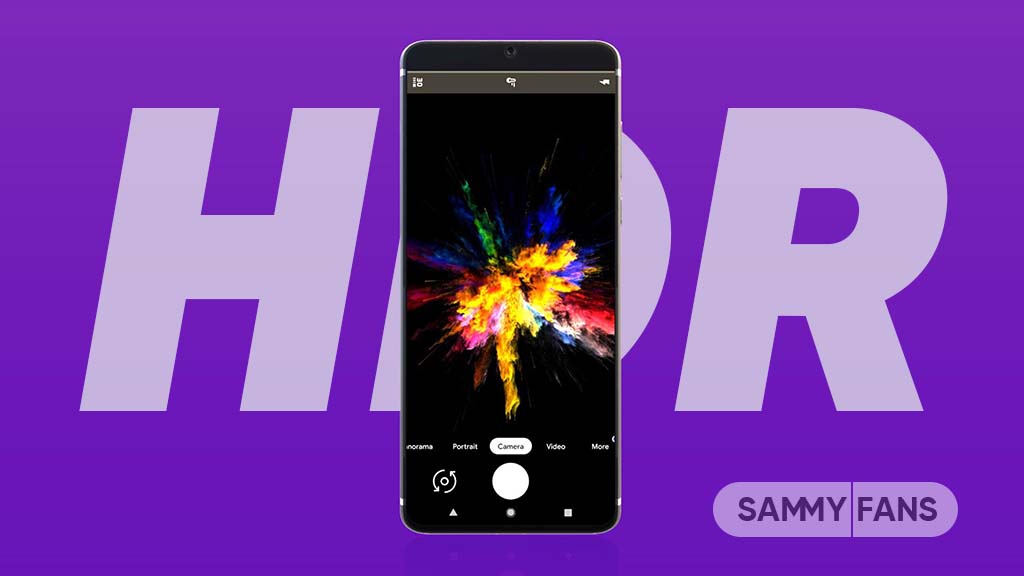News
Not all Samsung devices may support Android 14’s Ultra HDR, find yours

Ultra HDR became one of the most discussed topics among Android smartphone users. Since Google confirmed Android 14 will have support for this new image format, not all Samsung devices are likely to get the Ultra HDR with One UI 6.0 update.
According to reports, the Ultra HDR feature of Android 14 will be supported by smartphones that have a camera that can capture 10-bit HDR images. Additionally, Qualcomm confirmed that it’s working with Google to optimize the Ultra HDR for Snapdragon 8 Gen 2.
Follow our socials → Google News, Telegram, Twitter, Facebook
Hence, the Galaxy S23 lineup and newer flagships will have support for this new HDR functionality. Meanwhile, it’s possible that the company may optimize it for select smartphones powered by Snapdragon 8 Gen 1 processors such as the Galaxy S22 series and Z4 lineup (8+ Gen 1).
These Samsung devices may support Android 14’s Ultra HDR:
- Galaxy S23 5G
- Galaxy S23 Plus 5G
- Galaxy S23 Ultra 5G
- Galaxy Z Fold 5 – Unreleased
- Galaxy Z Flip 5 – Unreleased
Uncertain
- Galaxy S22 5G
- Galaxy S22 Plus 5G
- Galaxy S22 Ultra 5G
- Galaxy Z Fold 4
- Galaxy Z Flip 4

It is important to note that not all smartphones with a Qualcomm Snapdragon 8 Gen 1 or newer processor will support Ultra HDR. The smartphone manufacturer will need to enable the feature in the camera settings through software updates.
Here are some of the benefits of using Ultra HDR:
- More realistic colors and contrast
- Greater detail in shadows and highlights
- Improved dynamic range
- More flexibility in post-processing
Ultra HDR is a significant step forward in mobile photography. It offers a number of benefits that can make your photos look better than ever before. If you have a smartphone that supports Ultra HDR, be sure to try it out and see for yourself when Android 14 rolls out.
More on Ultra HDR
News
Samsung Galaxy Z Flip FE and Z Flip 7 could pack Exynos 2400e and Exynos 2500

Samsung could pack the Galaxy Z Flip FE and Z Flip 7 with Exynos processors. The company could launch its first affordable foldable phone next year. The device could get a different camera and processor from the Galaxy Z Flip 7.
Leaker Jukanlosreve revealed that Samsung could use the Exynos 2400e in the Galaxy Z Flip FE and Exynos 2500 in the Galaxy Z Flip 7. The former Exynos variant powers the Galaxy S24 FE, while the Exynos 2500 is an upcoming product.
Samsung previously intended to use Exynos 2500 in the Galaxy S25 series. However, the chip has a major performance difference from its Snapdragon counterpart. This led the company to solely rely on the Snapdragon 8 Elite for the S25 series.
Exynos 2500 is being manufactured using Samsung Foundry’s 3nm process node. The yield rate is quite low (around 20%), which is far from the production threshold. However, Samsung chose the path to produce the chip at such a low yield rate.
Exynos 2400 has proven to be a decent chip with no frustrating flaws. The Exynos 2400e could be used in the Z Flip FE. The “e” model could be made using IPoP (Integrated Package on Package) tech, which is cheaper than the standard method.
Recently, a Korean media outlet reported that Samsung Foundry has started mass production of a 3nm Exynos 2500 chip. It was initially intended to be used in the S25 and S25 Plus, but issues pushed it towards the second-half debut in the Z Flip 7.
News
Samsung brings huge energy-saving opportunity to New York

New York became the first US state to bring retail consumer rebates for appliances under the Inflation Reduction Act. Applauding the move, Samsung launched a huge energy-saving opportunity for the residents of New York.
Samsung started offering up-front discounts to consumers statewide through New York’s IRA HEAR program. Consumers can now access IRA’s Home Electrification and Appliance Rebate (HEAR) program.
IRA HEAR rebate program advantages
- Save up to $840 on Samsung’s innovative ENERGY STAR products, including laundry appliances like heat pump dryers and all-in-one combo washers + heat pump dryers.
Visit Samsung’s home appliance page to learn more about the options available.

Samsung said this is just the beginning of its rebates journey in New York. The company looks forward to working with partners to expand these retail rebates to more products and in more states across the United States.
Pay attention, the IRA provides rebates and tax credits to households across America. New York is leading the way in providing direct retail point-of-sale appliance rebates, supporting an affordable clean energy transition.
Inflation Reduction Act
Signed in August 2022, the Inflation Reduction Act is the single largest investment in climate and energy in American history.
It provides home appliance rebates for discounts on electric energy-efficient appliances like Induction cooktops, ranges, and heat pump laundry appliances.
News
Watch: Samsung Galaxy Watch Ultra conquers grueling military training

Samsung Galaxy Watch Ultra has undergone one of the most extreme military tests. The company has recently published a Watch Ultra test video, featuring Phillip Chu Joy.
Phillip participated in the Peruvian Navy’s Special Operations Course to showcase the watch’s capabilities. It is renowned as one of the world’s most challenging military training programs.
“The Galaxy Watch Ultra pushes technology to its limits, handling extreme conditions with ease,” Chu Joy remarked. “It’s undoubtedly designed for those seeking exceptional performance.”
The Samsung Galaxy Watch Ultra proves its durability and functionality in water, mud, and sand — excelling even under the grueling conditions of Peru’s most extreme military training.
Galaxy Watch Ultra
The Watch Ultra boasts a Grade 4 titanium frame. It also features a shockproof cushioned design that meets MIL-STD-810H2 military standards and water resistance of up to 10ATM.

The product is capable of operating within a broad temperature range of -20°C to 55°C4 and performing at altitudes of up to 9,000 meters above sea level.
These capabilities make it ideal for tracking advanced physical activities like ocean swimming and cycling in extreme conditions; take the Perivian military training as a recent proven example.
Samsung’s Watch Ultra is the ultimate companion for sports enthusiasts and extreme adventurers. It’s crafted to endure the toughest conditions with its pro-grade features and premium materials.
Samsung’s Mauricio Revollar stated:
“We wanted the public to experience the Galaxy Watch Ultra like never before in the Peruvian market by creating the most extreme product review ever undertaken here.”
“This was made possible thanks to the collaboration of the Peruvian Navy, which allowed us to highlight and celebrate the commitment of the students in one of the world’s most demanding military training programs.”
Watch the video below:












